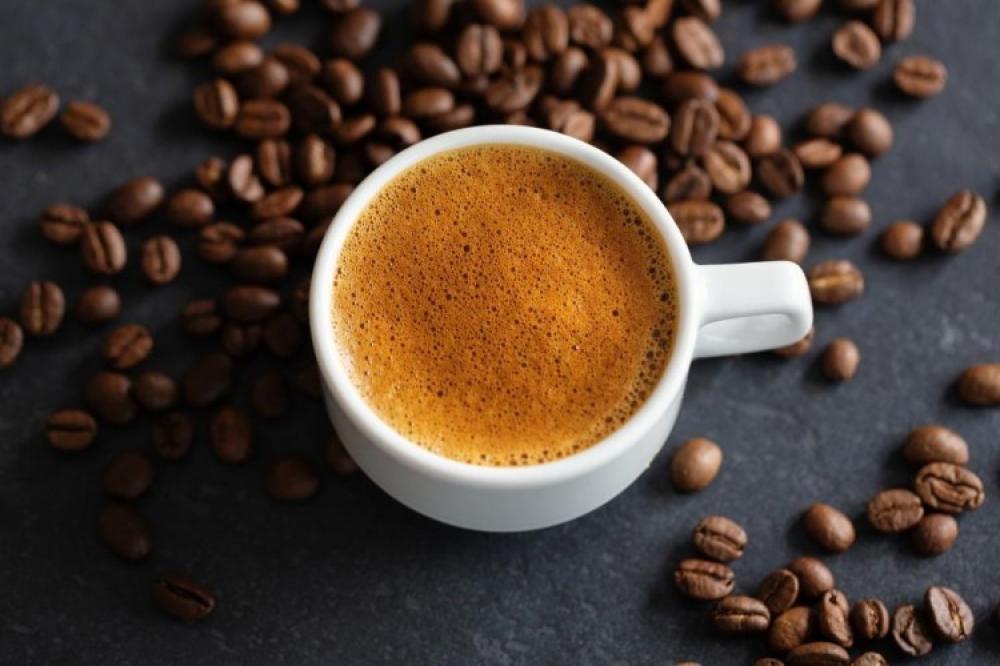Coffee is one of the most beloved beverages in the world, enjoyed by millions of people daily, whether to wake up energized or as part of a relaxing evening routine. But what if you want to add a special touch to your coffee preparation? What if you decide to brew your own roasted coffee at home from start to finish? Whether you prefer strong, mild, or complex flavors, brewing your own roasted coffee at home is a fun and rich experience, giving you complete control over the flavor and quality of your beverage.
In this article, we'll walk you through how to brew roasted coffee at home, step by step, and offer some tips to help you have the best coffee experience.
What is roasted coffee?
Roasted coffee is raw coffee beans that have undergone the roasting process, a fundamental step in coffee production. Roast levels range from light to dark, and the higher the roast, the more significantly the flavor of the coffee changes. Roasting is the process that transforms green (unroasted) coffee beans into coffee beans with a distinctive flavor and aroma.
How is coffee roasted?
The roasting process involves heating raw (not yet roasted) coffee beans to high temperatures ranging from 180 to 240 degrees Celsius. This heat causes the chemical compounds within the beans to break down, creating the distinct flavors we know in coffee. Roasting also causes the beans to expand and change color from green to brown, giving roasted coffee its unique flavor.
Types of roasting
There are several degrees of coffee roasting, each of which has a significant impact on the taste:
Light Roast:
- The beans are roasted for a short period of time, which preserves many of the original flavors of the cultivation and climate in which the coffee beans were grown.
- Its flavor is light and citrusy, with fruity and floral notes.
Medium Roast:
- Medium roast enhances the balance between acidity and roasted flavors.
- Coffee roasted this way has a balanced flavor between sweet acidity and roasted notes.
Dark Roast:
- Dark roasted coffee beans have a strong, bitter flavor, with reduced acidity.
- The taste is often "burnt" or "smoky," and sometimes has notes of roasted chocolate or caramel.
Why is coffee roasted?
Roasting is what gives coffee its distinctive flavor and aroma. Green (unroasted) beans have a mild, grassy, and unpleasant taste, but after roasting, chemical reactions called the Maillard reaction begin to change the structure of the beans, enhancing the complex flavors for which coffee is famous.
Additionally, the roasting process contributes to the development of compounds that influence the coffee's texture and taste, allowing consumers to experience a wide range of flavors based on the degree of roasting.
Benefits of roasted coffee
- Rich and complex flavor: The roasting process gives the coffee a rich and varied flavor, with a wide spectrum of flavors that include acidity, sweetness, bitterness, and caramel.
- Availability of Options: With a variety of roasting options available, consumers can choose the type that suits their personal taste.
- Pleasant Aroma: Roasted coffee gives off a delicious aroma that helps enhance your coffee drinking experience.
home roasted coffee
You can prepare roasted coffee at home by purchasing green coffee beans and then roasting them using a coffee roaster or even in a skillet. Roasting coffee at home is a great way to get the freshest taste, as the beans retain their flavor better when roasted immediately before brewing.
Roasted coffee is at the heart of the enjoyable coffee experience. Through the roasting process, green coffee beans are transformed into a delicious beverage with a unique flavor. The degree of roasting and the type of bean can significantly alter the flavor, giving you a wide variety to choose a coffee that suits your taste.
Steps for preparing roasted coffee at home
Selection of roasted coffee beans
The first step in preparing roasted coffee is choosing the right coffee beans. There are two main types of coffee beans: Arabica and Robusta. The selection process can be pivotal in determining the taste of your coffee.
- Arabica beans: The most common in specialty coffee, they have a smooth flavor and moderate acidity. They're a good choice if you're looking for a distinct, fresh taste.
- Robusta beans: These are stronger and richer in flavor, tend to be more bitter and intense, and contain a higher percentage of caffeine.
Once you've chosen your beans, you should consider the degree of roasting. Beans can range from light roasting (which preserves fruity and floral flavors) to dark roasting (which gives the coffee a sharper, more bitter taste). If you prefer a mild flavor, choose beans roasted light to medium.
Roasting coffee beans at home
If you want to prepare perfectly roasted coffee at home, here are some tips on how to roast coffee beans at home:
Required tools:
- Green coffee beans: You can buy green coffee beans from specialty stores.
- Coffee Roaster: A home coffee roaster can be the best way to achieve the perfect roasting degree.
- Roasting pan or tray: If you prefer to roast using simple household items, a regular pan can be used.
Roasting steps:
- Preheat the toaster or pan: Start by heating the toaster or pan to a moderate temperature.
- Add the beans: Place a quantity of green coffee beans (100 to 200 grams) into the machine or pan.
- Roasting: Be sure to stir the beans constantly to ensure even roasting. The beans will begin to "pop" after 5 to 10 minutes of roasting.
- Monitor the color: When the beans reach a light or medium brown color, you can stop roasting. If you prefer a darker roast, continue roasting until you achieve a darker color.
- Cooling the beans: After roasting is complete, transfer the beans to a cold container to cool them quickly, until the roasting process stops.
Coffee bean grinding process
The next step in preparing coffee is grinding the beans. Grinding the beans at home enhances freshness and flavor. However, you should be aware that the degree of grinding of the coffee affects the taste of the beverage, as each brewing method requires a different grinding degree.
- Coarse grind: Suitable for French press or cold brewing.
- Medium grind: Suitable for filtered or drip coffee.
- Fine grind: Suitable for espresso or Turkish coffee.
Use a burr, manual, or electric coffee grinder, and make sure to grind the beans evenly to ensure good flavor extraction.
Choose the preparation method
Once your beans are roasted and ground, it's time to choose your preferred brewing method. Here are some common ways to prepare coffee:
A. French Press
- Ingredients: 1 to 2 tablespoons of ground coffee and 180-240 ml of water.
- Method:
- Put the ground coffee into the French press.
- Heat the water to a temperature between 90-96°C.
- Pour water slowly over the ground coffee.
- Let the mixture ferment for 4 minutes.
- Slowly press the plunger down to separate the coffee from the grounds.
b. Espresso
- Ingredients: 18-20 grams of finely ground coffee and 30-40 ml of water.
- Method:
- Use an espresso machine to prepare coffee. Place the ground coffee in its container.
- Press the coffee with a smoothing tool until it is level.
- Turn on the machine and force hot water through the ground coffee under high pressure.
C. Trail (filter) method
- Ingredients: 1-2 tablespoons of ground coffee and 180-240 ml of water.
- Method:
- Place a paper filter in your coffee maker or drip machine.
- Add ground coffee to the filter.
- Heat water to 92-96°C.
- Pour water over the ground coffee in a slow, circular motion, allowing the water to pass through the filter and extract the flavors.
Dr. Turkish coffee
- Ingredients: 1 to 2 tablespoons of finely ground coffee and 100 ml of water.
- Method:
- Put the coffee in the pot with cold water.
- Mix the ingredients well, then put the pot on the stove.
- When the coffee starts to boil, remove the pot from the heat, then return it to the heat.
- Repeat this process two or three times, then pour the coffee into the cup.
Tips for preparing roasted coffee
- Use clean water: Make sure to use clean, fresh water when preparing coffee. Water is the essential ingredient in coffee preparation, so choosing it carefully greatly impacts the flavor.
- Using the correct amount of coffee: It is generally recommended to use one tablespoon of coffee per 180 ml of water. The amount can be adjusted according to personal taste.
- Controlling water temperature: Ensure the water temperature is between 90-96°C. Water that is completely boiling may negatively affect the taste of the coffee.
- Fresh Grinding: Grinding coffee beans just before preparation contributes to a fresher flavor. Do not grind too many at once.
Enjoy roasted coffee
After preparing your favorite coffee, don't forget to enjoy it in the best conditions. Try to avoid adding too much sugar or milk if you want to enjoy the authentic flavor of freshly roasted coffee.
Brewing roasted coffee at home is an art and science that requires some knowledge and the right tools, but when you master the process, you'll enjoy a fresh cup of coffee with a rich flavor that will satisfy your taste buds. From selecting the right beans to roasting and grinding, to brewing with the right tools, every step adds a special touch to your coffee-making experience.

